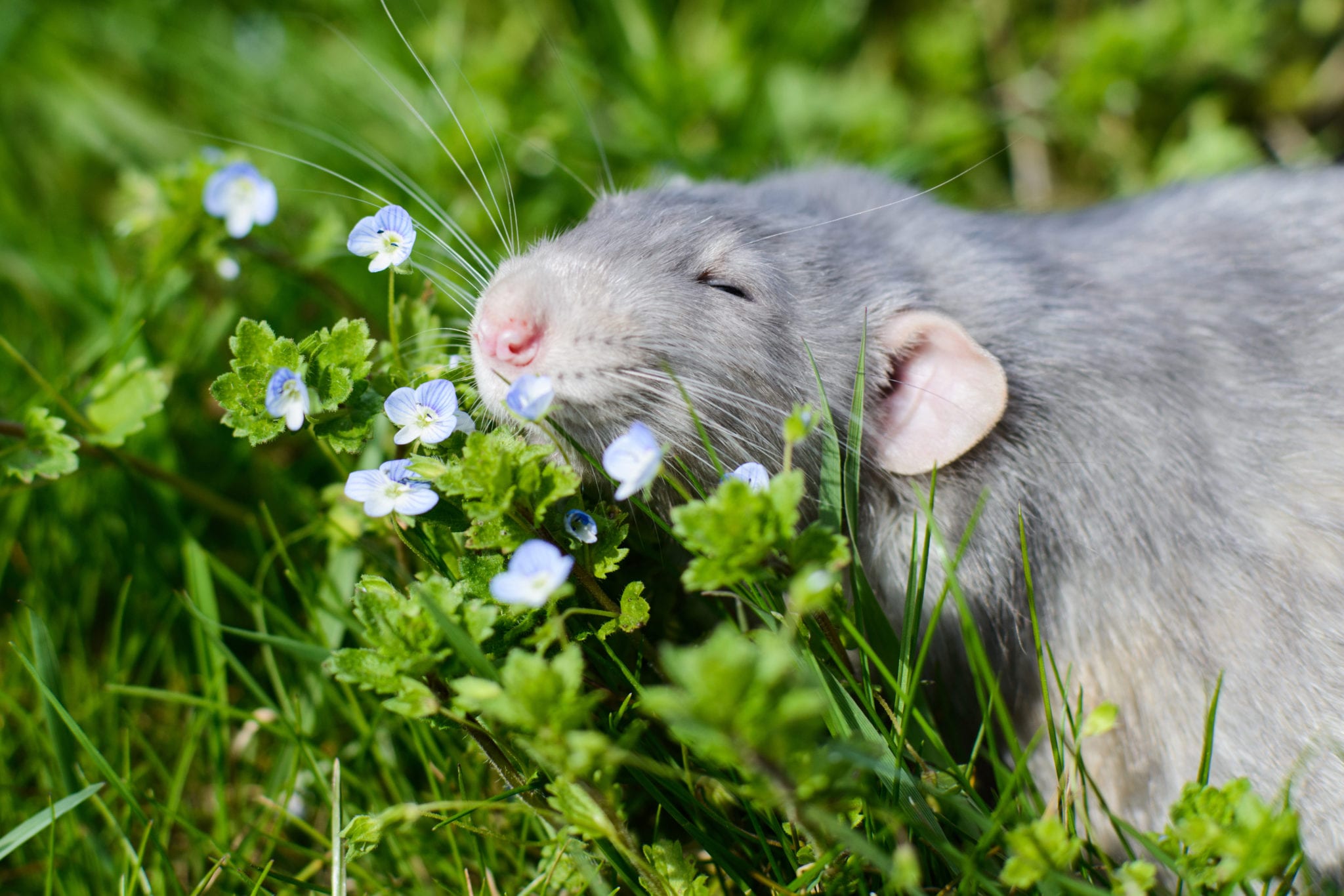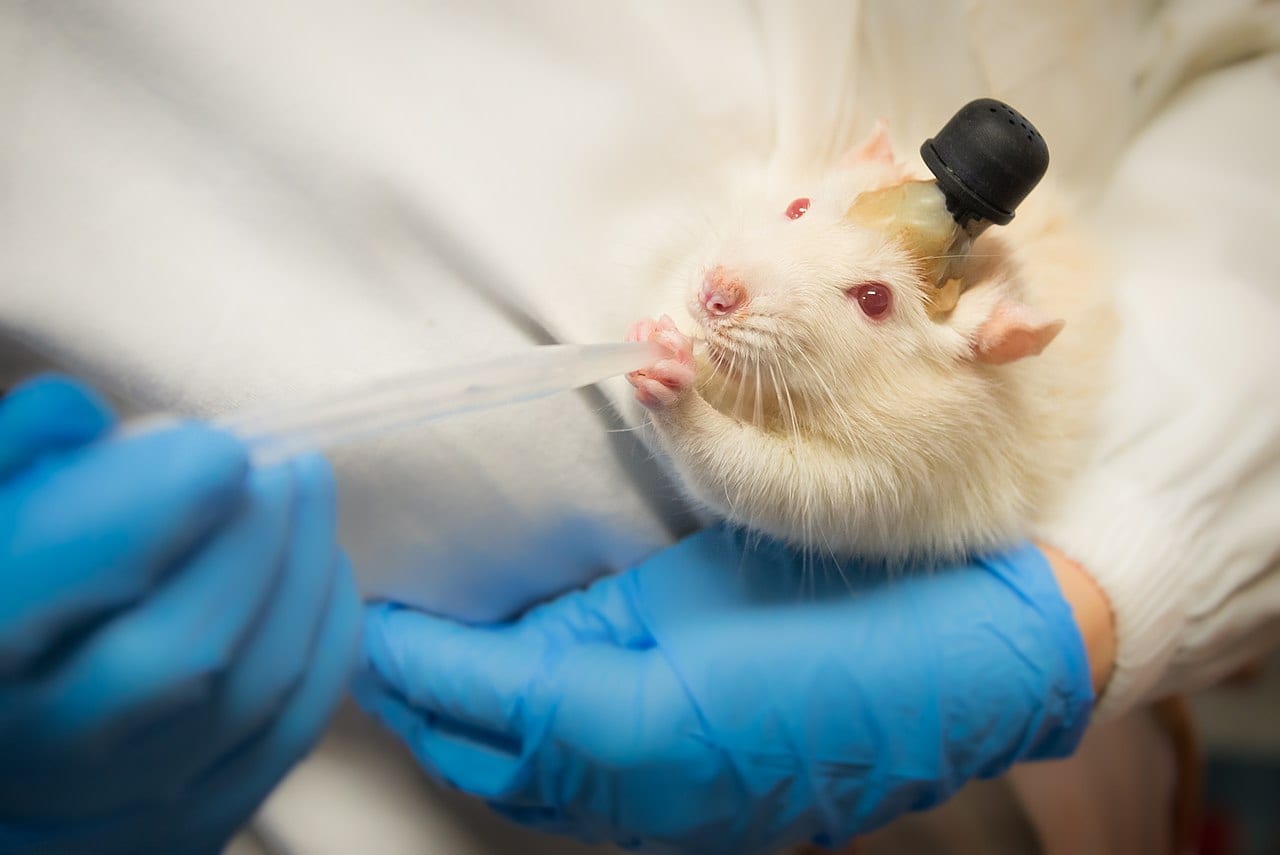If given the option, rats will hit the weed.
That’s according to the results of a new study conducted by researchers at Washington State University, published in the Journal of Neuroscience.
The experiment was the first of its kind to allow on-demand delivery of self-administrated, whole-plant cannabis vapour, and therefore the closest to mimic human use to date.
Most related studies in the past have used forced injections of synthetic cannabinoids. While they all bind the same receptor, these drugs don’t really mimic effects of cannabis, Ryan McLaughlin told Mugglehead in an email.
McLaughlin is an assistant professor at WSU’s College of Veterinary Medicine in the department of integrative physiology and neuroscience, who says the strength of this new model opens the doors to examine fascinating questions about cannabis use that would be hard to test in human experiments.
Read more: McGill researchers find you can have a psychedelic experience without taking any drugs
He says we’re now beginning to appreciate the huge interplay between the various components in cannabis, including its fragrant terpenes, that weren’t addressed with previous models.
“So we believe that the most significant takeaway from this study is development and validation of a novel tool for researchers to use that can perhaps generate more meaningful data that can have more direct relevance to human populations,” McLaughlin said. “This is something that has been sorely lacking in the field, and has really limited our understanding of how cannabis affects the brain and behaviour.”

Animal studies with direct relevance to human populations has been lacking in the field. Image via Deposit Photos
Rats get high on their researchers’ supply
For the study, rats were allowed to freely explore their own cannabis vapour chamber that had constant ambient air flow for one hour a day for about 21 days. Inside the chamber, there were two holes a rat could explore: one with an active response and one without. If a rat poked its nose into the active response hole, it broke a beam triggering a vapourizer hooked up to an e-cigarette tank containing a high-THC cannabis extract, a high-CBD extract or a control solution without any cannabinoids.
Since rodents naturally like to poke their noses into holes, McLaughlin says, they inevitably received vapour delivery during the initial sessions. Each day, as the rats began to understand the consequences of their nose poking behaviour, the researchers saw that the rats receiving cannabis extracts began to respond almost exclusively to those options, relative to the inactive option. Much to their surprise, they didn’t have to do much coaxing to get the rats interested in the vapour, particularly once they became familiar with its intoxicating effects.
Consistent with human cannabis users, the professor said the rats made the vast majority of their responding during the first 15 minutes of the one hour session, at which point the researchers typically saw reduced activity, exploration and other signs indicative of cannabis intoxication.
The researchers noticed there were high responders and low responders in each group. Perhaps most interestingly, McLaughlin says, when they increased the number of nose pokes rats needed to get a puff, they found that only rats receiving THC-rich vapes increased their effort to maintain an average number of vapour deliveries.
“This strongly indicates that THC-rich cannabis vapour has reinforcing properties in rats,” he said.
A stoner rat is a stoner is a stoner
So it’s safe to say these rats, like many humans, like getting baked. But do stoner rats mimic human stoners in other aspects?

“The lonely stoner seems to free his mind at night” Image via Reddit
McLauglin said that, anecdotally, although the rats were generally less active after hitting the cannabis vape, they tended to engage in more play behaviour with their mate after returning to their home cage.
On a more scientific level, the researchers measured food and water intake, respiration, activity levels, as well as how many calories the rats burned. In their home cage, each day before and after their cannabis vapour session, they found rats vaping the high-THC extract were more inactive in the hours immediately after exposure, and they also consumed more food over the course of the day.
Read more: First clinically verified cannabis insomnia treatment set to release this year
To McLaughlin’s surprise, the stoner rats seemed to burn more calories compared to their non-cannabis-exposed counterparts. This increased-caloric intake, increased metabolic response behaviour also mimics data on humans. And the similarities don’t stop there.
Importantly, McLaughlin noted, when cannabis was withheld from the rats after they had established patterns of use, the researchers observed the rats that had been receiving the THC vapour — but not the CBD vapour — showed a huge increase in seeking more of it. This behaviour resembles the reinforcing properties of THC in humans.
Also, if a cue light was shown when the rats were given the vapour, it strongly increased seeking behaviour for the THC-rich vapour after a period of abstinence.
If Dr. Dre’s The Chronic started playing could you not help but want to…?
https://www.youtube.com/watch?v=MDOdVdS8Z1A
“So in many ways, these rats showed patterns of cannabis intake and ensuing effects that are strikingly reminiscent of human cannabis users,” McLaughlin said.
Kicking the habit
Historically, withdrawal symptoms from cannabis use have been considered minor, especially in comparison to alcohol or caffeine. However, as cannabis has gained mainstream attention in recent years, more emphasis has been placed on the risks associated with long-term use and how people can suffer when discontinuing cannabis use.
At least in the relatively short term, rats coming off their 21-day weed adventure didn’t seem all that phased.
“We measured anxiety-like behaviour in these rats 24 hours after their final self-administration session to determine whether these rats would show any withdrawal-induced anxiety symptoms,” McLaughlin said. “But we did not find any evidence to support this.”
On a biological level, researchers did observe a decrease in the density of CB1 receptors in rat brains consistent with chronic cannabis use in humans.
Are rats using weed to cope with the stress of lab life?
In considering the relevance of the research, you’d be remiss not to consider the possibility that the rats might be using weed to reduce the environmental stressors of being a lab rat.
“We know that stress coping is the most commonly cited reason for continued cannabis use among habitual users, so it is certainly possible that rats self-administer cannabis vapour in an attempt to offset the effects of chronic stress due to the more artificial laboratory housing conditions,” McLaughlin speculates. “However, we have not assessed this experimentally so we cannot say that for certain.”
It should be noted, he says, that all of their rats are pair-housed with a mate for the duration of our studies and given nesting materials. They’re handled daily by trained experimenters, so the rats are exposed to some forms of environmental enrichment, albeit in a laboratory setting.

A lab rat from a different study with a brain implant. Photo by Anna Marchenkova via Wikimedia Commons
What people should glean from the results is what many have known for centuries, McLaughlin says: Cannabis containing THC has reinforcing properties that can support stable rates of use. Not particularly ground-breaking stuff, he admits.
The power of this study, according to McLaughlin, is that they’ve proven their self-administration, actual-cannabis extract model produces behaviour that closely mimics observed effects in human users.
“Now that this model has been validated and published, this will hopefully lead to a number of important studies that will use this model to answer some of our most important cannabis-related questions, particularly those that cannot be experimentally assessed in humans,” he said.
On the other hand, what the public shouldn’t glean from these results is that they’ve in any way proved that cannabis is addictive, McLaughlin said. Just because the researchers were able to train rats to respond to cannabis vapour delivery doesn’t mean they induced cannabis use disorder or addiction.
“Addiction is a much more complex topic of discussion and while our data indicate that cannabis vapour has reinforcing properties and supports conditioned drug seeking in rats,” McLaughlin said. “They do not display pathological or maladaptive behaviours that are characteristic of human drug addiction.”
The frontiers of weed science
Having this robust scientific model opens the gates for a wealth of research possibilities going forward, some of which are already under way.
McLaughlin and his team are now poised to examine important questions about the long-term effects cannabis exposure has on development.
Read more: Pregnant women who use cannabis daily put their babies at risk: study
“We have some intriguing data examining long-term cognitive and emotional effects of prenatal cannabis exposure that should be published later this year,” he said. “And we are in the final stages of completing a large-scale project exploring the effects of adolescent cannabis vapour self-administration on cognitive flexibility and the structure of cells in the prefrontal cortex later in adulthood.”
Read more: Stoned people’s memories can be manipulated easier: study
His team is also interested in exploring biological and behavioural predictors of high versus low rates of cannabis use with this model, as this information could be used to identify individuals who may be more at risk for developing problematic use.
These are just a few of the exciting ongoing studies in our laboratory, McLaughlin said.
Top image from the “Vaporized Cannabis Extracts Have Reinforcing Properties and Support Conditioned Drug-Seeking Behavior in Rats” study manuscript, courtesy of Ryan McLaughlin
nick@mugglehead.com
@nick_laba













